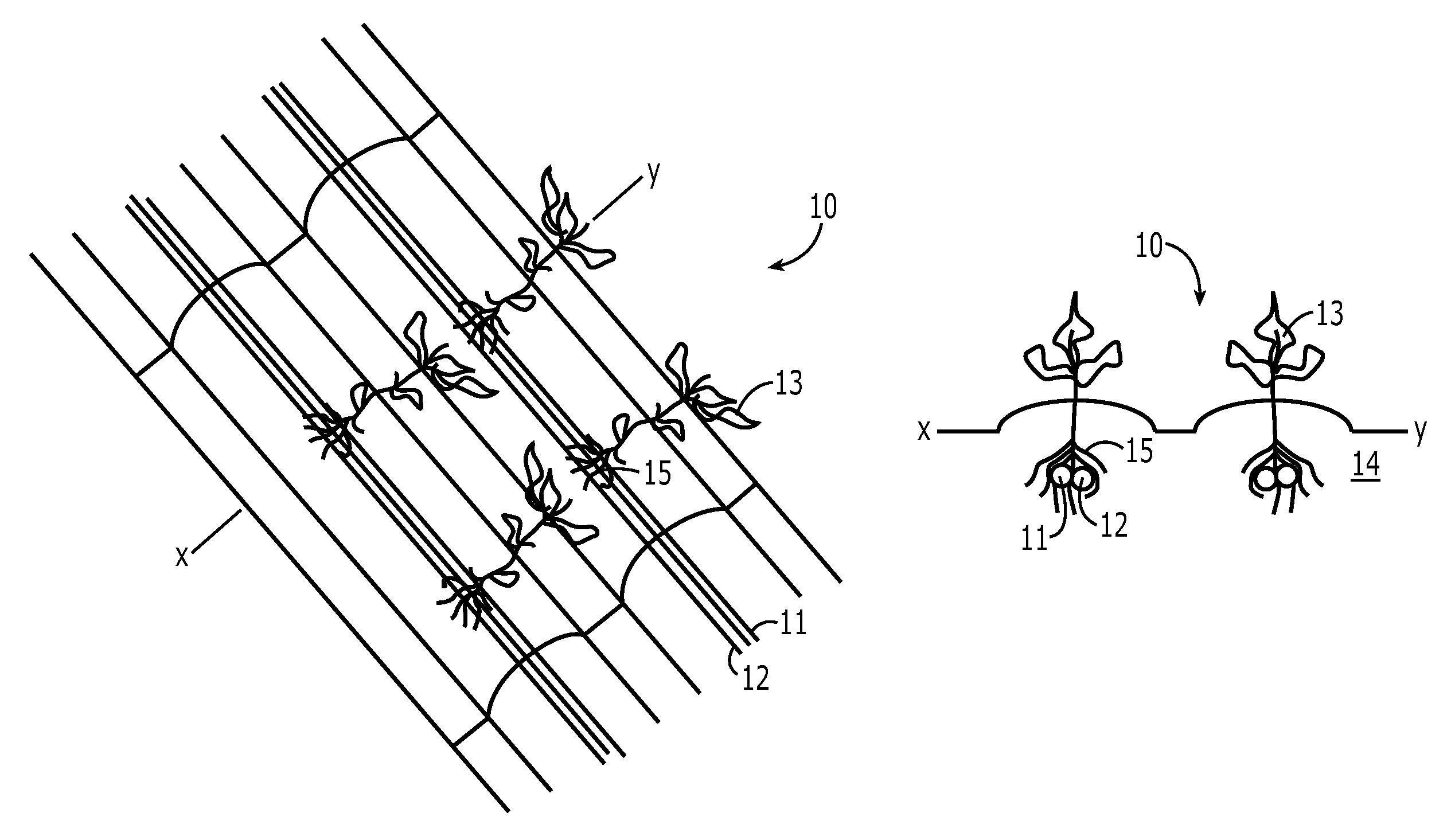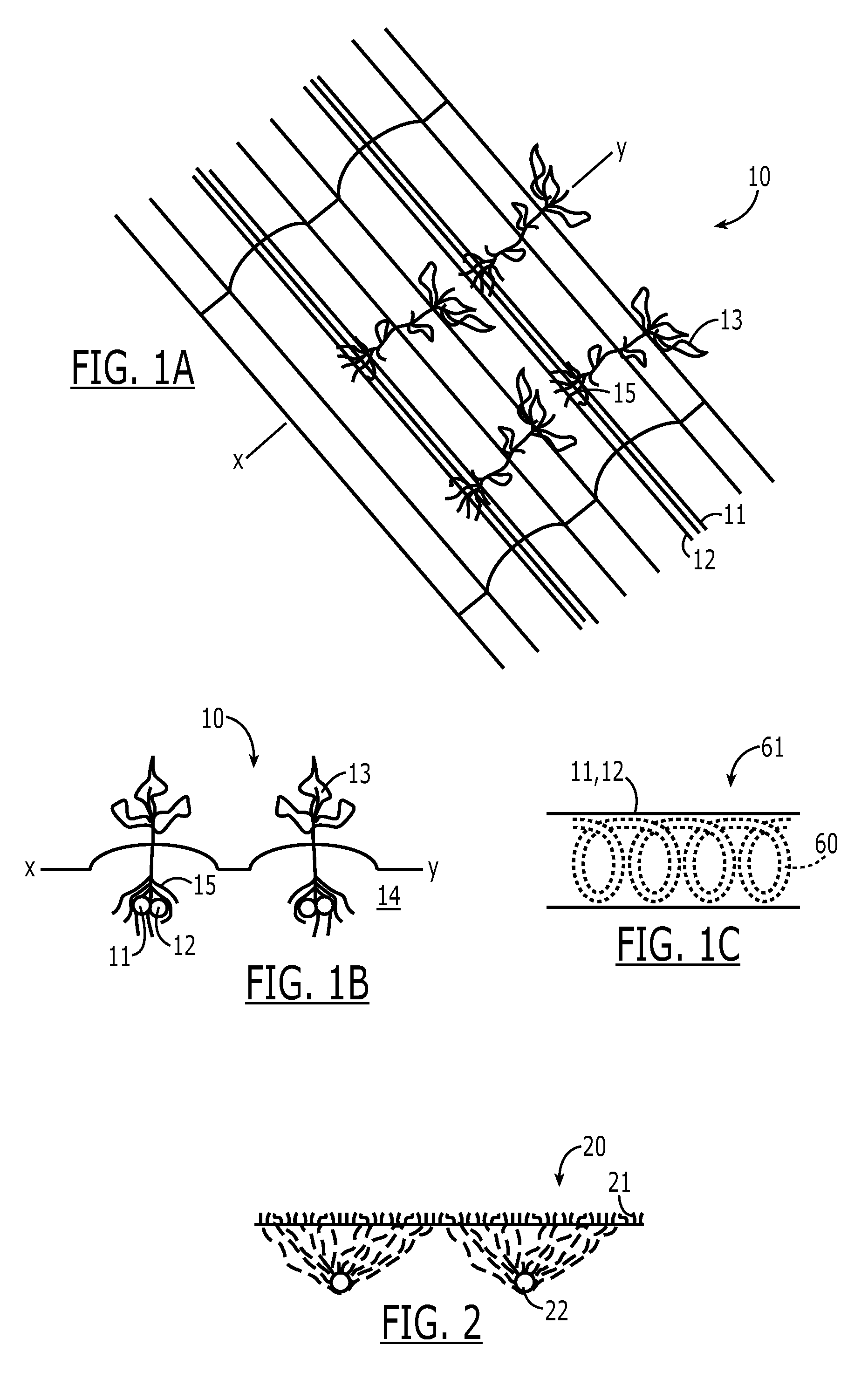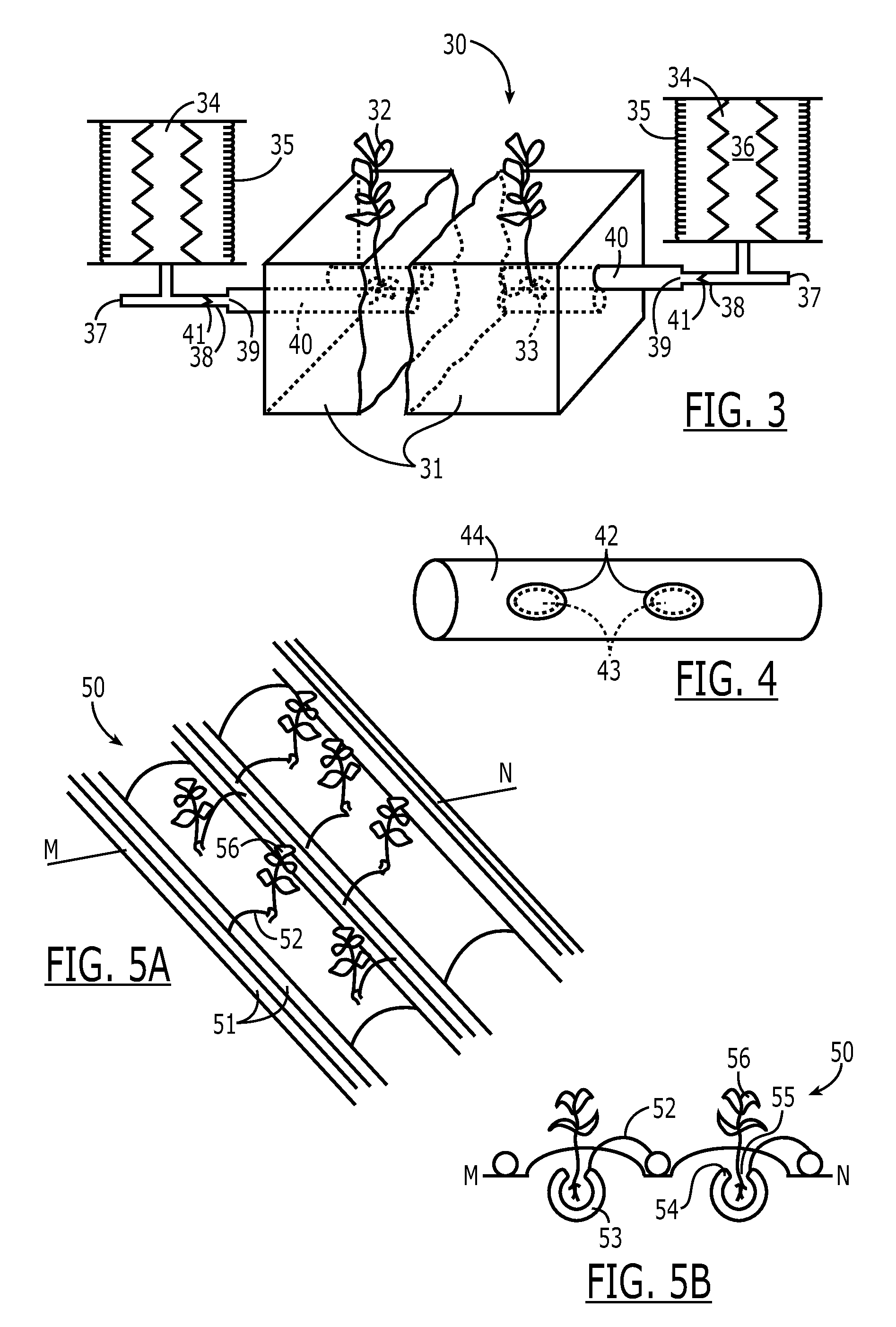Fluid and nutrient delivery system and associated methods
a technology of nutrient delivery and fluoride, applied in the field of systems and methods, can solve the problems of not automatically stopping the delivery of water, wasting water, and difficulty in obtaining a membrane that can supply the necessary amount of water, and achieve the effect of efficient delivery of aqueous solution to plants
- Summary
- Abstract
- Description
- Claims
- Application Information
AI Technical Summary
Benefits of technology
Problems solved by technology
Method used
Image
Examples
example 1
[0048]A 4 ft. length of Tyvek® tubing (#1053D) was made hydrophilic with an alcoholic solution of polyhydroxystyrene and submerged in a 4.5 ft by 13 cm wide by 10 cm deep planter, covered with soil and connected to a constant supply of nutrient solution at a constant head of 35 cm of water. Ten cherry tomato (Lycopersicon sp.) seedlings were planted at even distances next to the tube where water and nutrients were supplied. Fluorescent lighting was supplied to the plants for 18 hours per day. The average consumption of water was 75±10 mL / hr when the plants were 15 cm high and 125±20 mL / hr when the plants were 25 cm high. When rainfall was simulated by spraying the bed with 100 mL of water, the consumption of water dropped to zero for 2 hours and slowly over the next 3 hours returned to the normal rate. The plants grew to two feet in height, and numerous tomatoes were harvested.
[0049]At the end of the experiment, the system was examined to determine if there was any competition betwe...
example 2
[0051]A continuous irrigation tube can be unnecessary for plants such as grape vines or kiwi vines that are spread apart from each other by distances as much as 20 to 40 cm. In these situations 50, it is more practical to use a main flexible surface distributing tube 51 of from 20-30 mm ID, out of which are drawn satellite tubes 52 that feed a short length of from 10 to 30 cm, depending of the size of the vine, of thin-walled microporous hydrophilic irrigating tube 53, closed at its end 54, surrounding the roots 55 of the vine or bush 56, as illustrated in FIGS. 5A and 5B.
example 3
[0052]A tomato plant was planted in potting soil, into which was also placed two 20-cm-long microporous hydrophilic tubes of 1 cm radius. The tubes were connected to reservoirs of water and nutrient which were kept full. The soil remained dry while the plant grew to produce numerous tomatoes.
PUM
 Login to View More
Login to View More Abstract
Description
Claims
Application Information
 Login to View More
Login to View More - R&D Engineer
- R&D Manager
- IP Professional
- Industry Leading Data Capabilities
- Powerful AI technology
- Patent DNA Extraction
Browse by: Latest US Patents, China's latest patents, Technical Efficacy Thesaurus, Application Domain, Technology Topic, Popular Technical Reports.
© 2024 PatSnap. All rights reserved.Legal|Privacy policy|Modern Slavery Act Transparency Statement|Sitemap|About US| Contact US: help@patsnap.com










